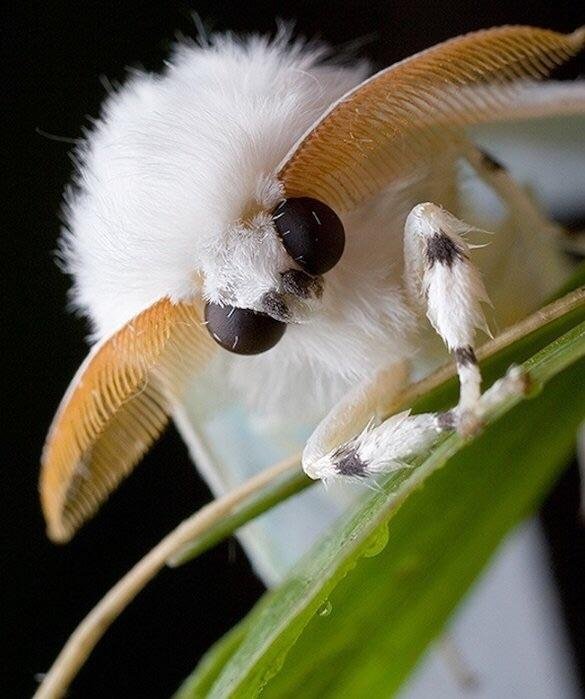Oct 03 2022
Pangenome of the Domestic Silkworm

Recently scientists have published the complete pangenome of the domesticated silkworm (Bombyx mori). I thought this was intriguing for several reasons. First, I don’t think I have discussed previously here what a pangenome is. Second, I never thought about the fact that the silkworm is technically a domesticated animal. And third, silk is an important material that has been the focus of much scientific research, so of course I was interested in how this latest research might affect that.
A pangenome (I have seen “pan-genome”, “pangenome”, and “pan genome” – I’m just going to go with pangenome) is the complete genetic profile of a species (or more broadly, a clade) including all variants. So a pangenome of Homo sapiens would include a map of every gene that exists in people, not just a genome of one person. This provides a more complete picture of the genetics of that species than a single genome would. A pangenome can also provide information useful for determining the evolutionary relationships among varieties of a clade. It can also be useful to track specific genes and the traits that they control.
They gathered a tremendous amount of data:
The team deeply re-sequence 1,078 silkworms (B. mori, including 205 local strains, 194 improved varieties, and 632 genetic stocks and 47 wild silkworms, B. mandarina) and assemble long-read genomes on 545 of these samples, generating 55.57 T of genomic data.
and
The team has identified 468 domestication-associated genes and 198 improvement-associated genes, of which respectively 264 and 185 are newly identified.
One of the questions the researchers tried to answer with this data is where the domestic silkworm originated 5,000 years ago. Their data points to China, which is also supported by archaeological data. However, there also seems to have been a separate domestication program in Japan, for long enough that distinct variants emerged. Importantly, the Chinese and Japanese varieties have different silk-improvement mutations. This means there could be significant advantages to making hybrid varieties between these two branches of the domestic silkworm tree. Identifying specific genes that provide specific advantages to the quality of the silk could also be used to make bioengineered silkworms with optimal or desired traits. For example, the researchers identified genes that control the fineness of the silk.
Interestingly, there were more genes associated with domestication rather than silk quality. I realized that I thought of domestication in animals involving mainly behavior, but the basic definition (according to National Geographic) is simply – “Domestication is the process of adapting wild plants and animals for human use.” Silkworms clearly meet that definition. One of the key differences in behavior is that the wild silk moths can fly while their domesticated cousins are flightless. Wild silkworms also tend to spread out, while domesticated silkworms tend so stay put. They are completely dependent on humans to survive, living on a diet of mulberry (and hence you may hear the term “mulberry silk”). Silkworms are also the only fully domesticated insects in the world. The honeybee is also considered domesticated, but not “fully”.
Will all this information have an impact on the silk industry? Possibly. Using silk likely goes back 5,000 years, and today the global silk market is estimated at $16.9 billion in 2021 and is projected to increase to over $30 billion by 2029. Silk is highly desired because of its “luster, smooth and soft texture, conspicuous mechanical strength, good biocompatibility, slow biodegradation, and carbon neutral synthesis.” Optimizing production, efficiency, and silk quality can have a significant impact on this industry.
There are already efforts to created bioengineered silk, and this latest genetic information will be a boon to such efforts. For example, researchers have successfully engineered silkworms to produce colored silk. You can pre-dye silk by feeding the worms food with dye, but apparently the color saturation is very poor. Genetically altering silk color has successfully been done using fluorescent colors, but with efforts to produce economically useful colors (or create a demand for fluorescent silk). This could be very advantageous, because silk is generally white, and the dying methods use harsh chemicals, can degrade the silk, and produce a lot of waste water. Colored silk would therefore be environmentally friendly. Of course, I can’t help thinking about how the anti-GMO ideologues will react to such developments. Will they call for “GMO-free silk” even though it is much more harmful to the environment? (I think we know the answer to this.)
There have also been efforts to insert transgenes from spiders into silkworms, to make hybrid spider silk. Spiders cannot be domesticated, and are not useful for mass production. But if we could get the domesticated silkworm to essentially crank out spider silk, then we may see the birth of a new industry. Spider silk may not be as lustrous as silk, but it is very strong, and can be theoretically used for applications such as bullet-proof textiles, or strong and light cables. These efforts, so far, have not succeeded. The output of these worms is only about 5% spider silk, for example. I suspect we will continue to hear about this endeavor, with each incremental advance, but it is still anyone’s guess if this will cross the line to economic viability.
The tremendous advances in genetics, however, make applications like mass-produced spider silk, and improved silk, increasingly plausible.






